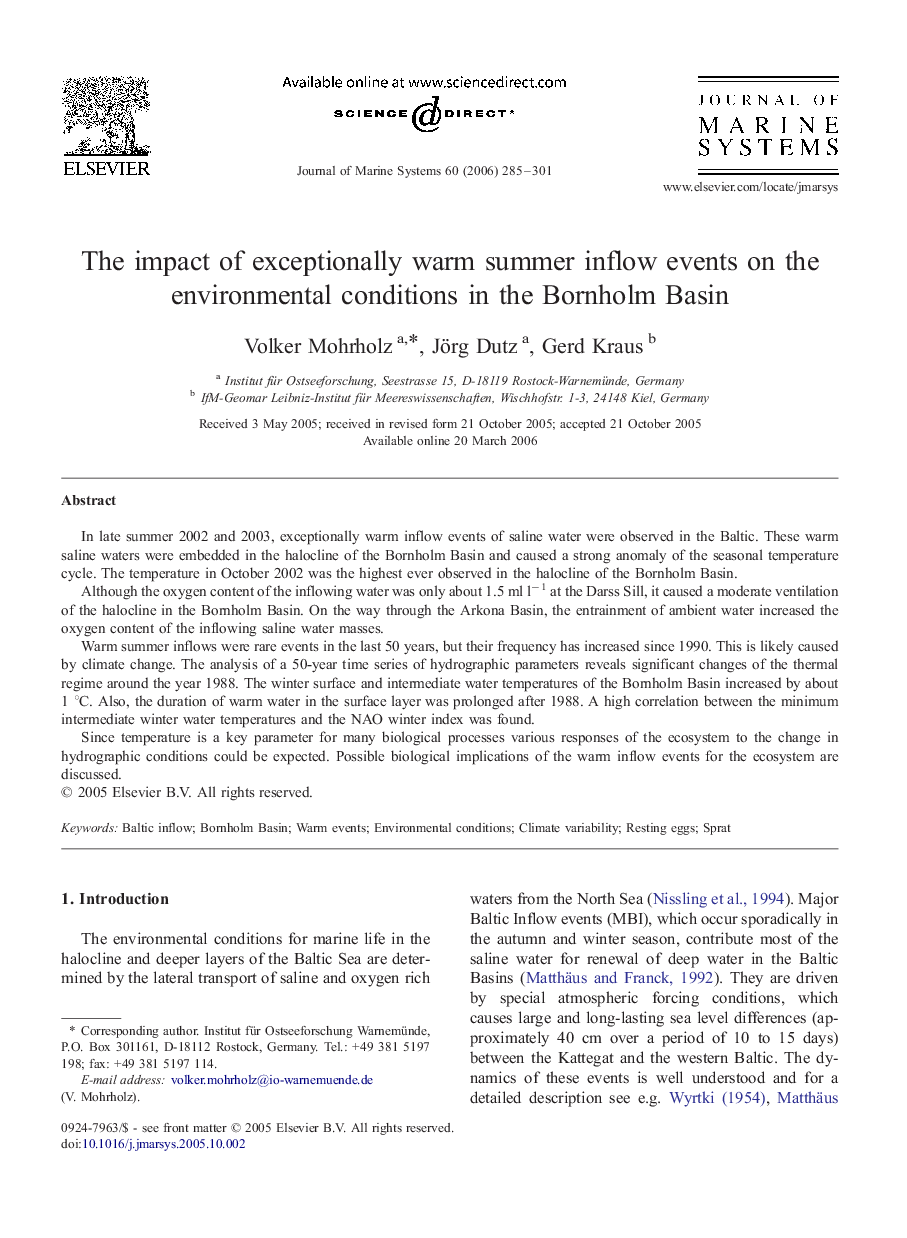| Article ID | Journal | Published Year | Pages | File Type |
|---|---|---|---|---|
| 4549413 | Journal of Marine Systems | 2006 | 17 Pages |
In late summer 2002 and 2003, exceptionally warm inflow events of saline water were observed in the Baltic. These warm saline waters were embedded in the halocline of the Bornholm Basin and caused a strong anomaly of the seasonal temperature cycle. The temperature in October 2002 was the highest ever observed in the halocline of the Bornholm Basin.Although the oxygen content of the inflowing water was only about 1.5 ml l− 1 at the Darss Sill, it caused a moderate ventilation of the halocline in the Bornholm Basin. On the way through the Arkona Basin, the entrainment of ambient water increased the oxygen content of the inflowing saline water masses.Warm summer inflows were rare events in the last 50 years, but their frequency has increased since 1990. This is likely caused by climate change. The analysis of a 50-year time series of hydrographic parameters reveals significant changes of the thermal regime around the year 1988. The winter surface and intermediate water temperatures of the Bornholm Basin increased by about 1 °C. Also, the duration of warm water in the surface layer was prolonged after 1988. A high correlation between the minimum intermediate winter water temperatures and the NAO winter index was found.Since temperature is a key parameter for many biological processes various responses of the ecosystem to the change in hydrographic conditions could be expected. Possible biological implications of the warm inflow events for the ecosystem are discussed.
